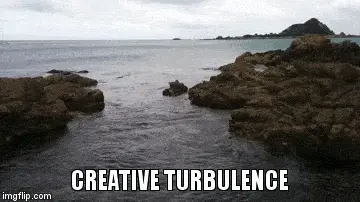Everyday Wellbeing Design Challenge – Empathy

Last week we wrote about the exciting turbulence that was created at the turning point in the design challenge, where students were able to continue with the design brief they’d been shaping up for five weeks, or change and seek a new path.
As I was sitting and watching the ebb and flow of the waters of the Tapu Te Ranga Marine Reserve, I saw similarities between the flux of the Design Challenge, and how the waters drew back and then surged forward. This turbulence is vital to learning, to good design research, and to people growing. It felt like an apt metaphor to help the students as they were about to enter a new wave of the challenge.
Week 6 was all about the first steps of the design process – building empathy for the people who were at the centre of the design brief.
To do this, the Massey tutors had introduced a couple of tools in week 5 which invited the students to undertake some design research. Here’s a couple of the tools which were used to introduce the topic:
- The d.School Design Process – complete with empathy methods
- IDEO Method Cards
The students role was to identify a suitable method to take them to the next level of learning and understanding the lives of their specific audience. You can read a little more about design research here.
In week 6 they were bringing back the preliminary findings from their research and doing some sense making. To do this, they employed some pattern spotting techniques such as John Maeda’s “SLIP” (Sort, Label, Integrate, Prioritise) and d.School’s “Saturate & Group” (PDF).

It seems like such an easy technique when you begin, but the art of this method is in capturing a wide array of insights, thinking through the multiple layers of the insights which can be garnered – from the kind of behaviours that were observed, to words that people used, to commonalities in how people experienced something. The d.School Empathy Mapping tool (PDF) is also useful for this.
This is a crucial part of the design process which helps students converge on insights to help them move forward. The aim at the end of Week 6 was to have a ‘point of view statement’ which would enable the students to enter the semester break with one bold statement of possibility, on which they can build an elegant way to help Kiwis improve their everyday wellbeing.

Want to see more of what’s been happening at the Everyday Wellbeing Design Challenge? We’ve just created a mid-way photo album on facebook here:
Working with 290+ Massey University students from the School of Design to develop a huge range of approaches to improve the wellbeing of Kiwis.
Posted by Lifehack HQ on Saturday, 29 August 2015
See all of the posts from the challenge so far, or sign up for updates about the Design Challenge when we open source it later in the year at the Everyday Wellbeing Design Challenge hub here.


